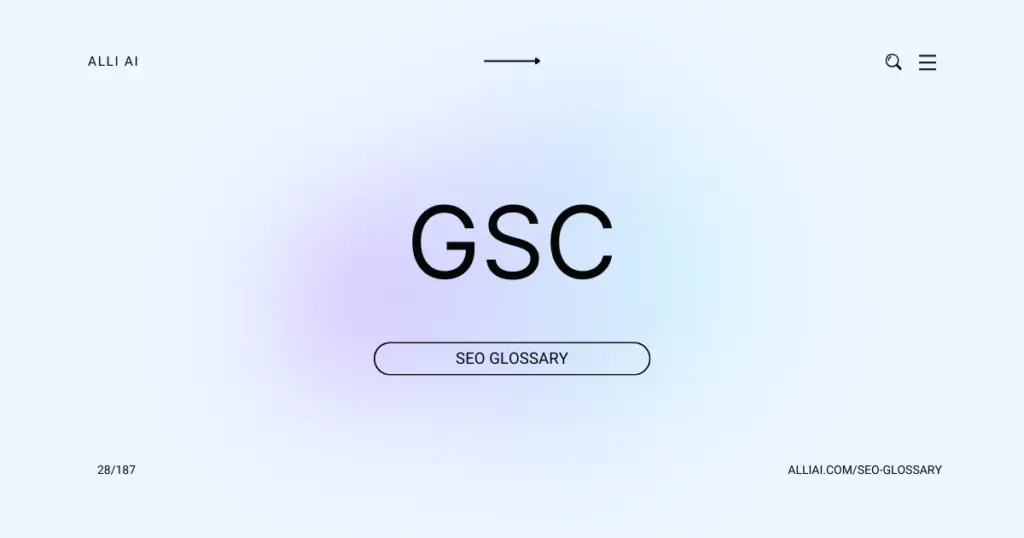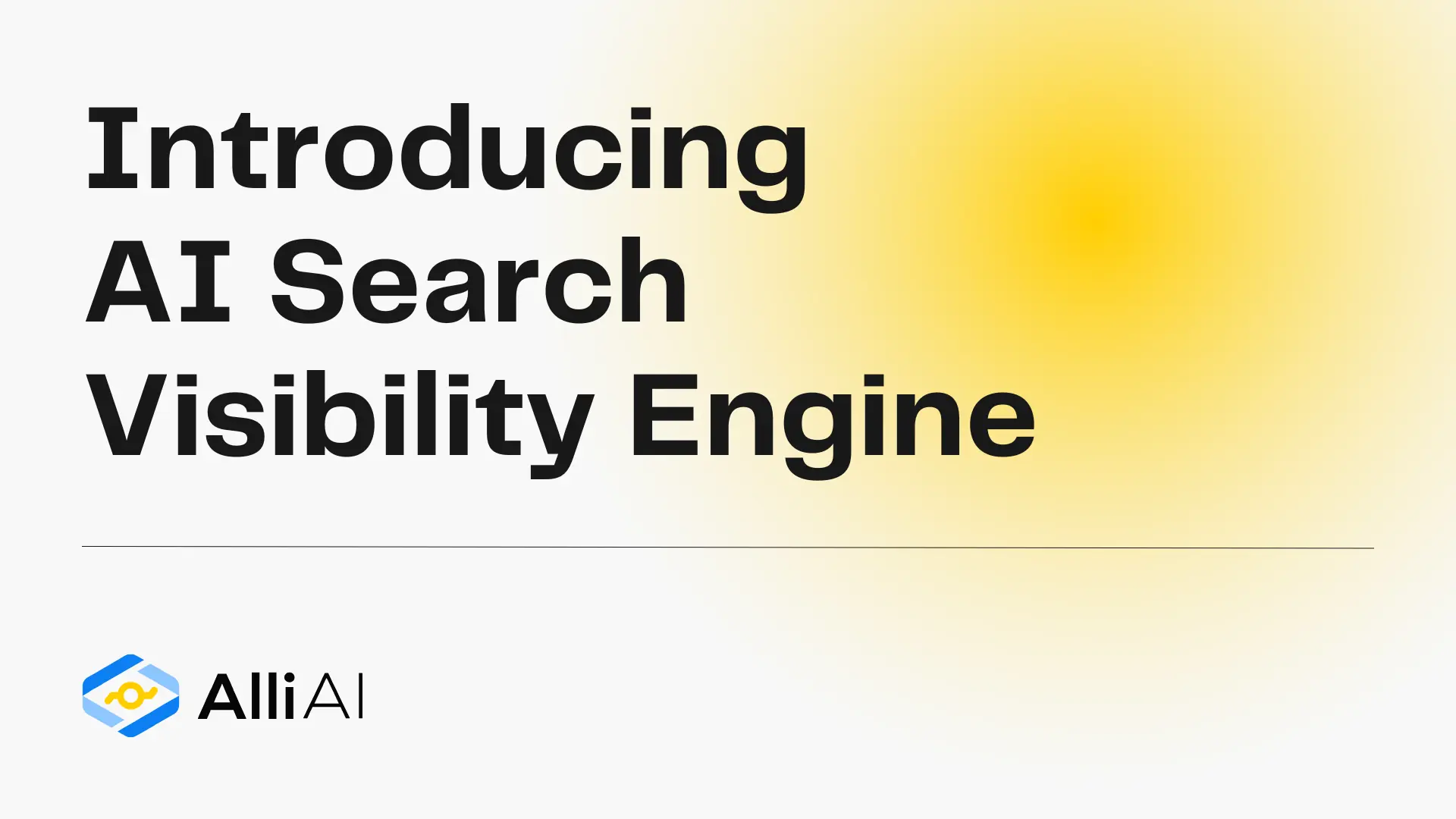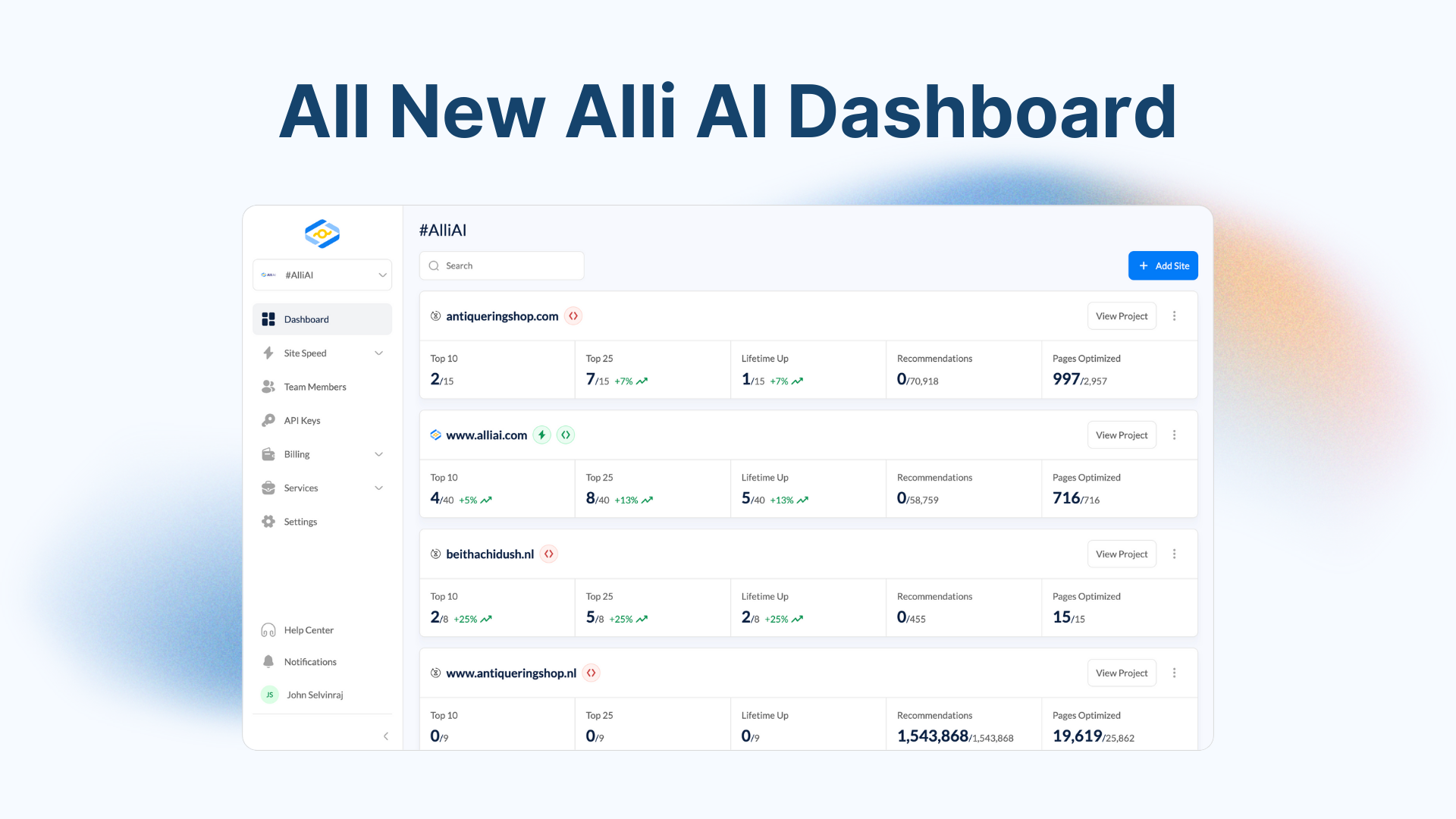What Does Google Search Console (GSC) Mean?
Google Search Console (GSC) is a free tool provided by Google that helps website owners monitor and maintain their site’s presence in Google Search results. It provides insights into how Google views your site, reports on issues that need attention, and shows which queries bring users to your site, helping you optimize your search performance.
Where Does Google Search Console (GSC) Fit Into The Broader SEO Landscape?
Google Search Console (GSC) is a crucial tool for SEO professionals. It provides detailed insights directly from Google about how the search engine views a website. This includes information on website indexing, the visibility of the pages in search results, issues affecting site performance, and the keywords that are driving traffic. GSC offers functionalities for monitoring website performance metrics such as clicks, impressions, click-through rates, and positions in search results.
The tool helps in identifying and fixing technical SEO issues, such as crawl errors and security issues like hacking or malware. It also allows webmasters to submit sitemaps and individual URLs for crawling and indexing, ensuring that all valuable content is accessible to Google. Moreover, GSC assists in understanding the impact of different website updates or optimizations by providing before-and-after performance comparisons.
GSC’s role in SEO involves not only diagnostics and maintenance but also strategic planning. Insights obtained from GSC can guide content creation, website architecture decisions, and targeted optimizations to improve search performance. By integrating GSC data with other data sources like Google Analytics, SEO professionals can create a comprehensive strategy based on how users and Google interact with their site.
Real Life Analogies or Metaphors to Explain Google Search Console (GSC)
Google Search Console is like the dashboard of a car. Just as a car dashboard provides you with real-time data such as speed, fuel level, and engine health to efficiently control and maintain your vehicle’s performance, Google Search Console offers vital statistics like search traffic, site performance, and indexing status to help you manage and optimize your website’s presence in Google search results.
In another analogy, it serves as the bridge of a ship for a captain. Where a ship’s captain uses various tools and gauges on the bridge to navigate and ensure the vessel’s smooth operation, a webmaster uses Google Search Console to guide their website through the vast oceans of the web, steering clear of obstacles like errors and penalties, while finding the best routes to visibility and user engagement.
How the Google Search Console (GSC) Functions or is Implemented?
### Google Search Console Mechanics and Implementation
1. Site Verification:
– Site ownership is confirmed through methods such as HTML file upload, domain name provider, HTML tag, GA tracking code, or GTM container snippet.
2. Sitemaps Submission:
– XML sitemaps are submitted to GSC to help Google discover and index pages.
3. Crawl Stats and Errors:
– GSC reports how Googlebot accesses specific site content, highlighting any crawl errors like 404s or server errors.
4. Search Analytics:
– Analyzes clicks, impressions, click-through rate (CTR), and position of site URLs in search results. Data is filterable by query, page, country, device, and date.
5. Mobile Usability:
– Identifies pages with mobile usability issues such as small text or incompatible plugins.
6. Security Issues:
– Alerts and details security issues like hacking, malware, and harmful downloads.
7. Links:
– Information on external and internal links, showing which sites link back and how site content is interlinked.
8. Manual Actions:
– Notifications regarding manual penalties by Google due to guideline violations.
9. Index Coverage:
– Detailed reports showing which pages are indexed and any problems detected during crawling.
10. Enhancements:
– Specific feedback on structured data, speed (Core Web Vitals), and other factors that affect user experience.
Impact Google Search Console (GSC) has on SEO
1. Keyword Performance Analysis: GSC provides data on which search queries bring users to a site, including information on impressions, clicks, and click-through rate (CTR), allowing webmasters to optimize content and meta tags for better keyword performance.
2. Identification of Crawling Issues: It alerts users to any crawling errors such as 404 errors, server errors, or problems with the robots.txt file, enabling timely resolutions that ensure Google can index the site effectively.
3. Sitemaps and URLs Submission: It allows for the direct submission of sitemaps and URLs to Google, which speeds up the indexing process of new or updated content, making it visible in search results sooner.
4. Mobile Usability Monitoring: It detects and reports on issues that affect a site’s usability on mobile devices, such as viewport configuration problems or the use of incompatible software, which is crucial for ranking in mobile searches.
5. Security and Malware Issues: It notifies webmasters of any security issues such as hacking or malware, which can negatively impact search rankings if they’re not addressed promptly.
6. Structured Data Implementation and Errors: It provides insights and manages how structured data is interpreted by Google, helping to enhance rich snippets in search results which improve click-through rates.
7. Link Analysis: It offers detailed information about internal and external links, allowing webmasters to understand and optimize the site’s link structure and assess the value of backlinks.
8. Search Traffic and Performance Reporting: It tracks trends in search traffic, providing valuable insights into user behavior and preferences, which can be crucial for refining SEO strategies.
9. AMP (Accelerated Mobile Pages) Tracking: It monitors the performance and errors of AMP pages, ensuring they work correctly and deliver fast mobile experiences, which can influence mobile ranking.
10. International Targeting: It aids in setting a target country for a website’s audience, optimizing the SEO for geographically-specific search results and improving user experience by increasing local relevancy.
SEO Best Practices For Google Search Console (GSC)
1. Sign into Google Search Console with your Google account.
2. Add and verify your website property using the recommended method by Google.
3. Set up your preferred domain to specify how you want your site to appear in search results (with www or non-www).
4. Submit your XML sitemap to Google:
– In the GSC dashboard, select your website.
– Click on ‘Sitemaps’ under the ‘Index’ section.
– Remove outdated or invalid sitemaps if any.
– Add the new sitemap URL and click ‘Submit’.
5. Use the URL Inspection tool to crawl specific URLs:
– Enter the URL you want Google to inspect and select “Enter.”
– After the inspection, if issues are found, resolve them and request indexing.
6. Check for mobile usability issues:
– Navigate to ‘Mobile Usability’ under ‘Enhancements.’
– Review issues reported and fix them.
– Validate the fix after making changes to ensure the issue is resolved.
7. Monitor and enhance site performance with Core Web Vitals:
– Go to the ‘Core Web Vitals’ section under ‘Enhancements.’
– Address poor URLs as suggested.
– Optimize Largest Contentful Paint (LCP), First Input Delay (FID), and Cumulative Layout Shift (CLS).
8. Fix security issues and manual actions:
– Check ‘Security & Manual Actions’ regularly.
– If there are any issues or penalties, resolve them following Google’s guidance and then request a review.
9. Utilize the Performance report to monitor search traffic:
– Analyze search queries, click-through rate (CTR), impressions, and positions.
– Use insights to improve content and SEO strategies.
10. Adjust international targeting if necessary:
– Go to ‘Legacy tools and reports,’ select ‘International Targeting.’
– Set the target country in the ‘Country’ tab for geo-targeting if applicable.
11. Use the Links report to analyze and enhance your backlink profile:
– Review ‘External links’ and ‘Internal links’ reports.
– Strengthen your internal linking and acquire quality backlinks from reputable sites.
12. Regularly check for crawl errors in the ‘Coverage’ section and fix them:
– Review details of errors and warnings.
– Correct the URLs and submit them for re-indexing.
13. Update your site accordingly as per Insights and Recommendations provided by GSC:
– Implement changes recommended in GSC to further optimize your site.
14. Continuously monitor GSC notifications and emails for any urgent issues or recommendations from Google.
Common Mistakes To Avoid
1. Not Using Google Search Console:
– Sign up for GSC and verify your website promptly to start collecting data and insights.
2. Ignoring Crawl Errors:
– Regularly monitor and address crawl errors to ensure Google can index your site correctly.
3. Overlooking Security Issues:
– Review Security Issues reports to fix hacks or malware that can negatively affect your site’s ranking.
4. Failing to Submit Sitemaps:
– Submit and update XML sitemaps in GSC to assist Google in better indexing your site.
5. Neglecting Mobile Usability Issues:
– Use the Mobile Usability report to identify and fix issues affecting mobile users.
6. Not Utilizing Search Analytics:
– Regularly analyze performance data to understand how visitors find your site and which queries are most effective.
7. Ignoring HTML Improvements:
– Attend to HTML improvement suggestions to enhance SERP snippets and site performance.
8. Forgetting to Set Up Email Notifications:
– Enable email notifications to receive alerts about issues or penalties directly in your inbox.
9. Disregarding Linked Accounts:
– Link Google Analytics and Google Ads with GSC for richer data and improved analysis.
10. Misusing The URL Removal Tool:
– Use the URL Removal tool cautiously as improper use can de-index important content.
11. Using Incorrect URL Parameters Settings:
– Understand the impact of URL parameters on content indexing before modifying the settings in GSC.
12. Overlooking User Management:
– Control user permissions wisely to safeguard sensitive data and prevent unauthorized changes.
13. Not Monitoring Manual Actions:
– Regularly check for manual penalties and understand the reasons to resolve them.
14. Ignoring International Targeting:
– Use the International Targeting tool correctly if your site targets users in specific countries or languages.
15. Forgetting to Re-verify the Site:
– Re-verify your ownership in GSC if you change your domain or update significant site properties.






